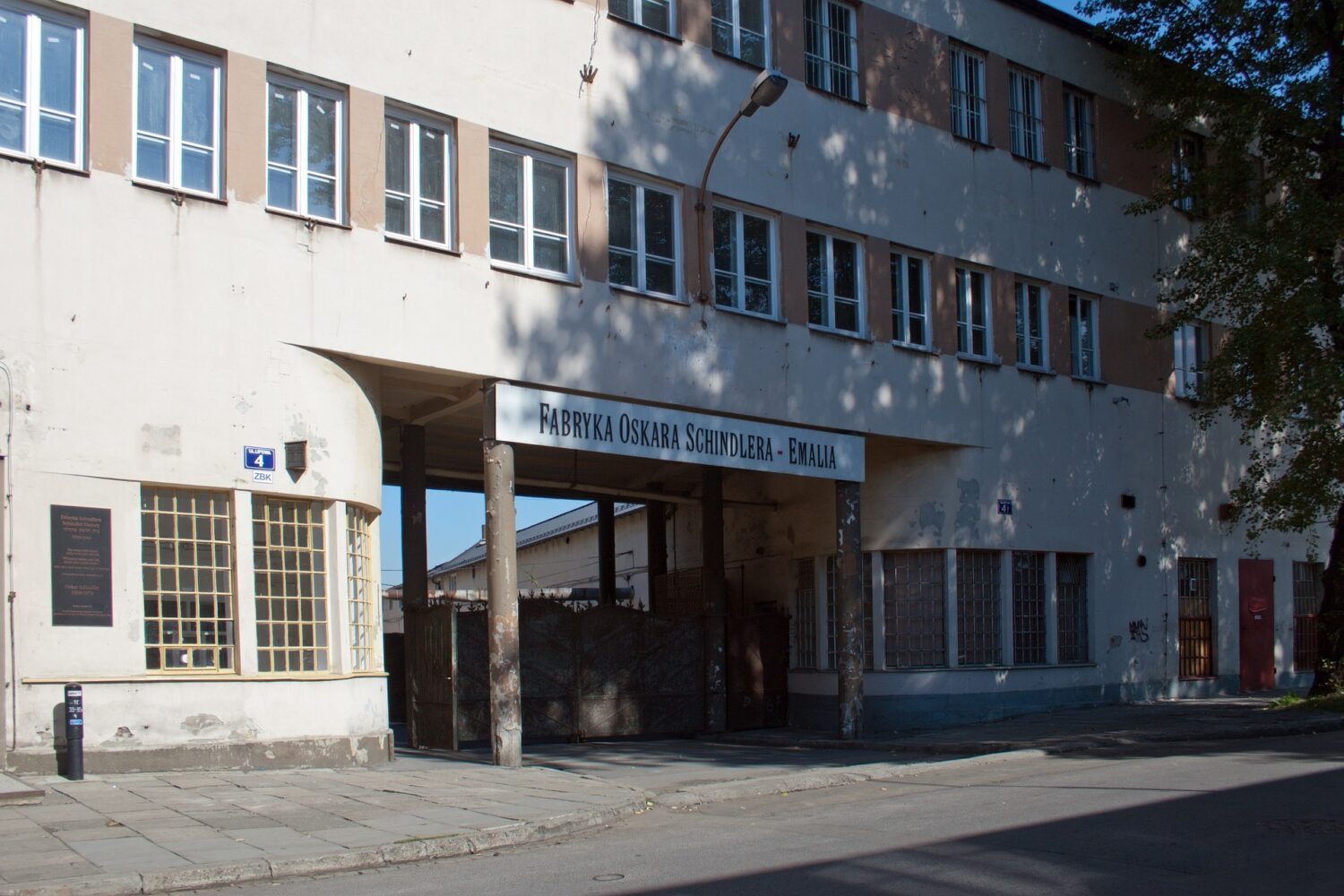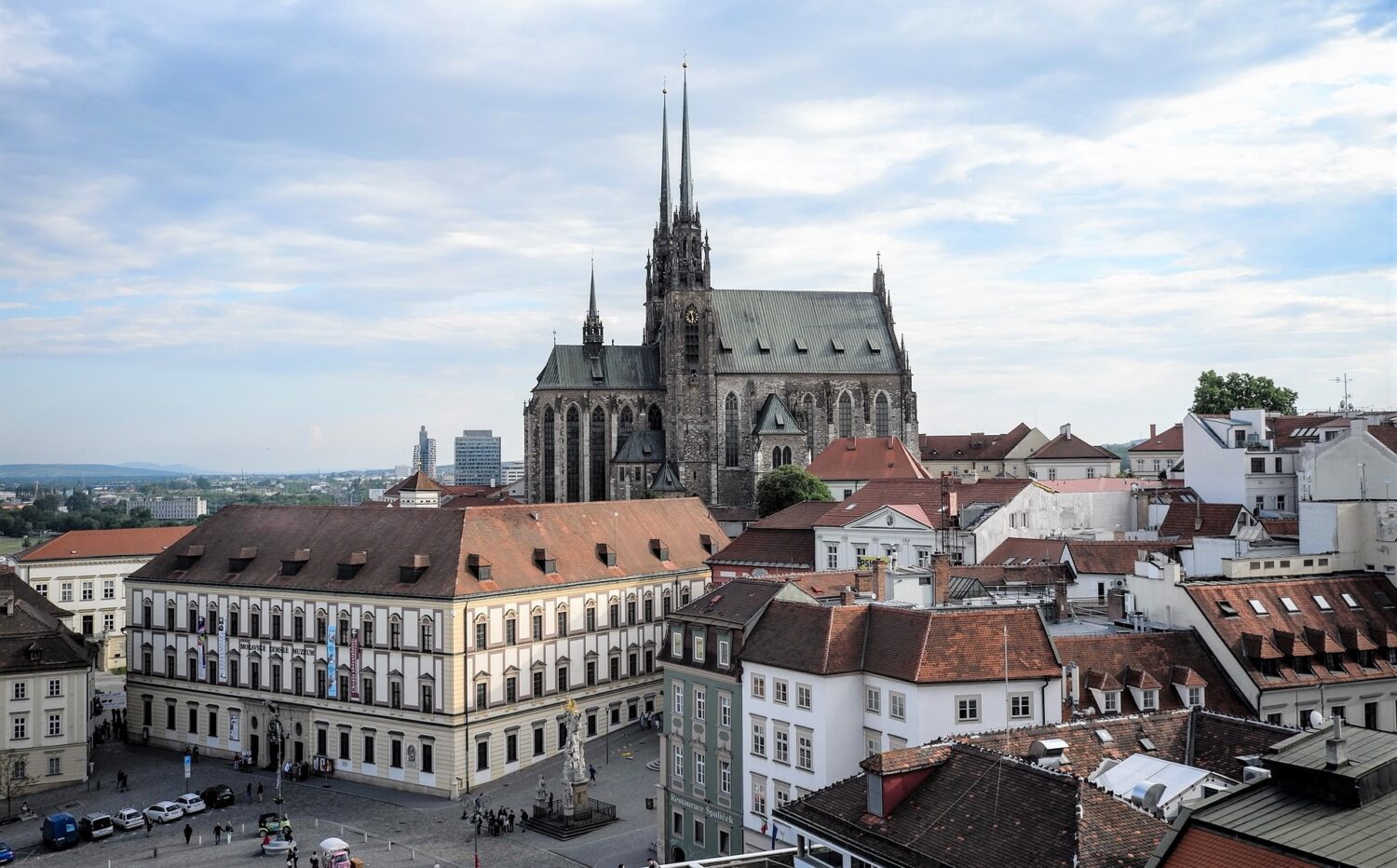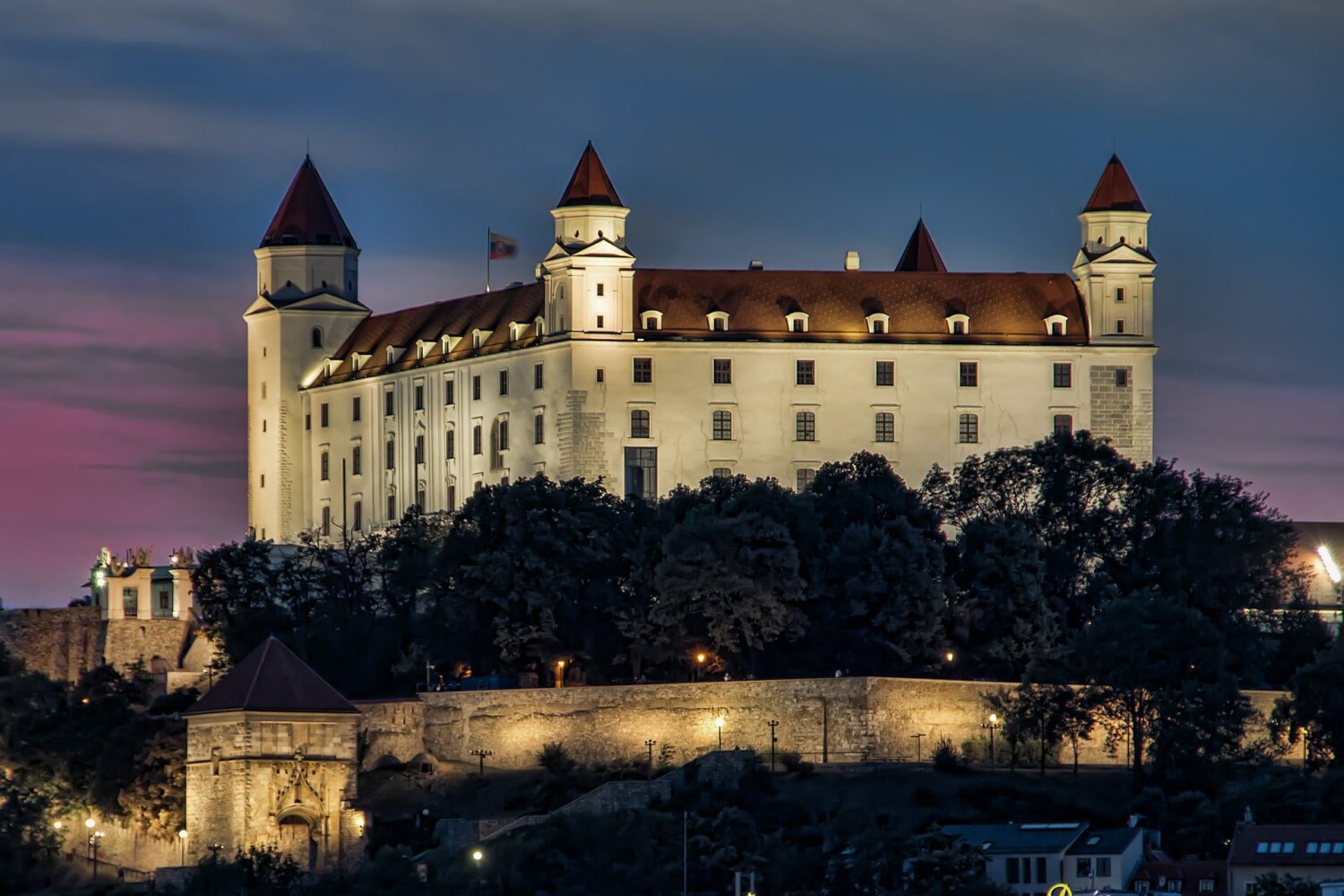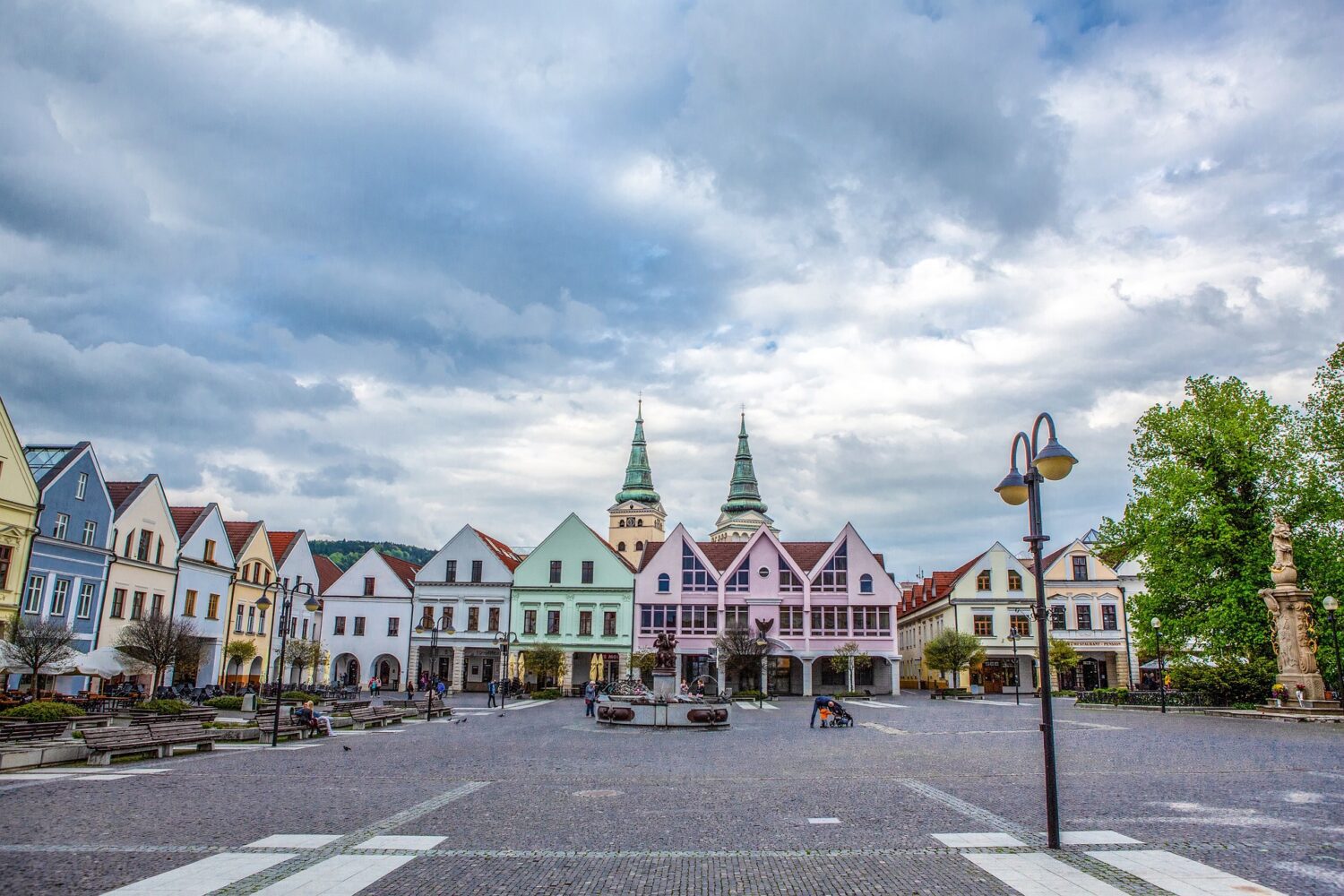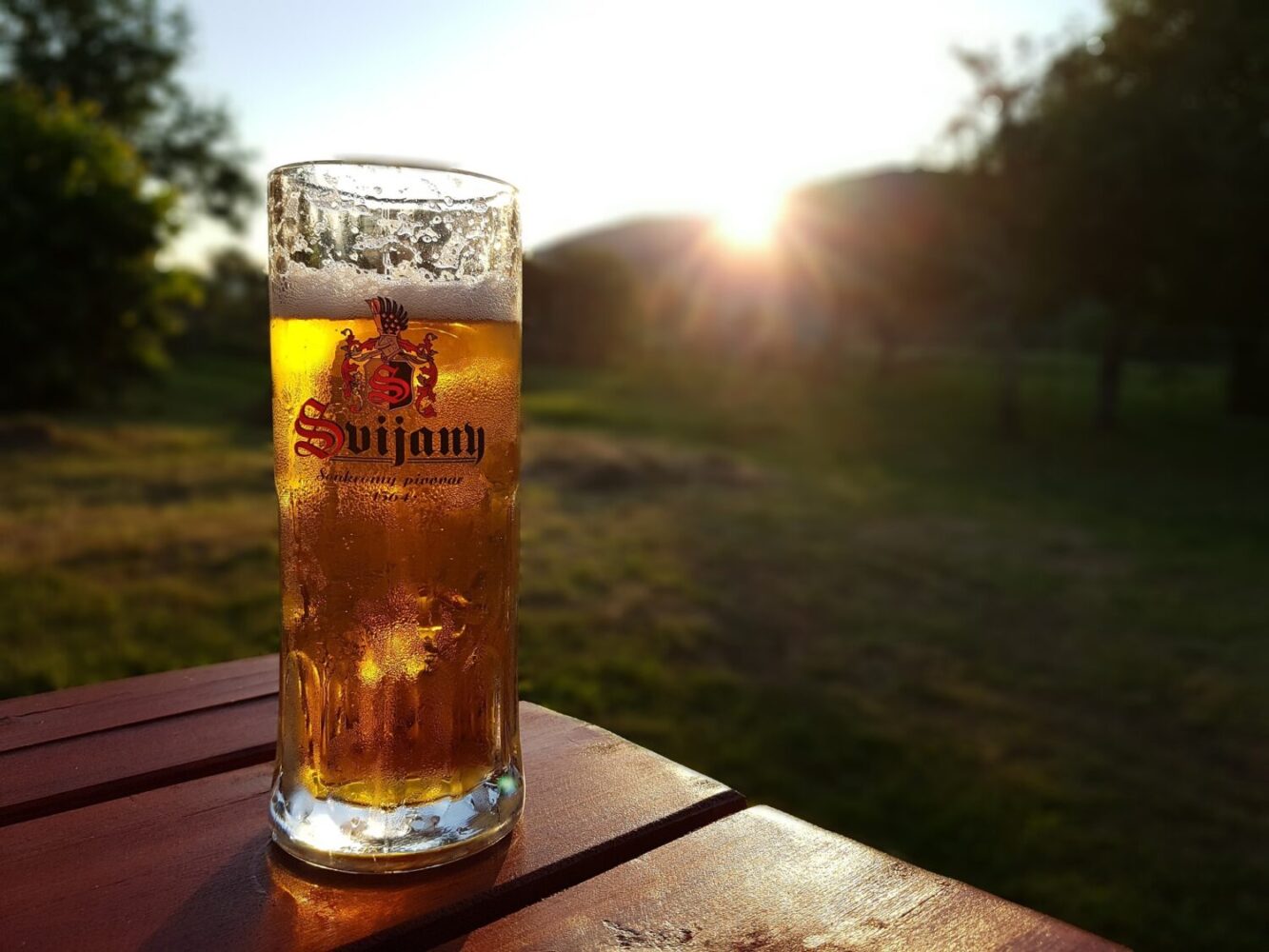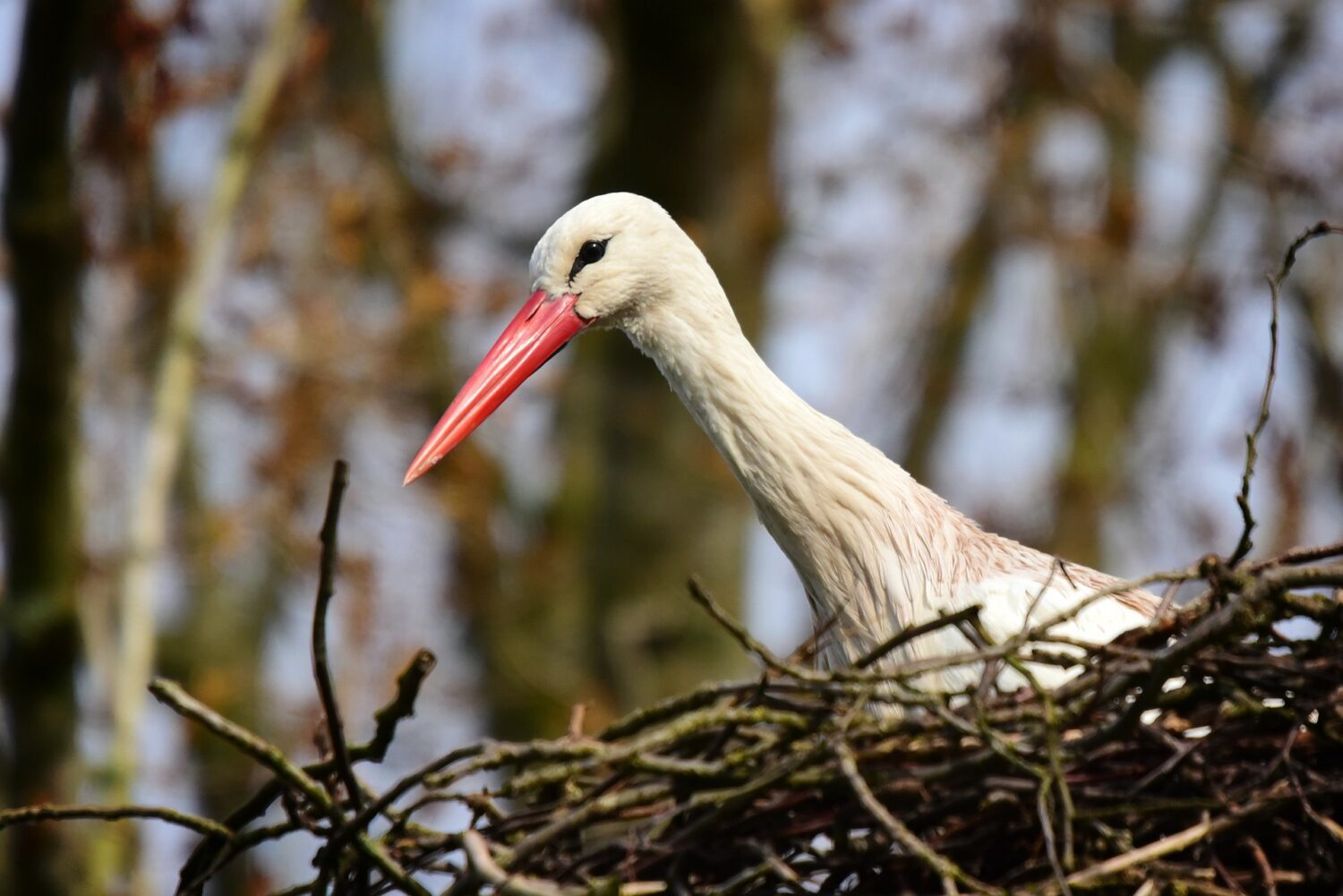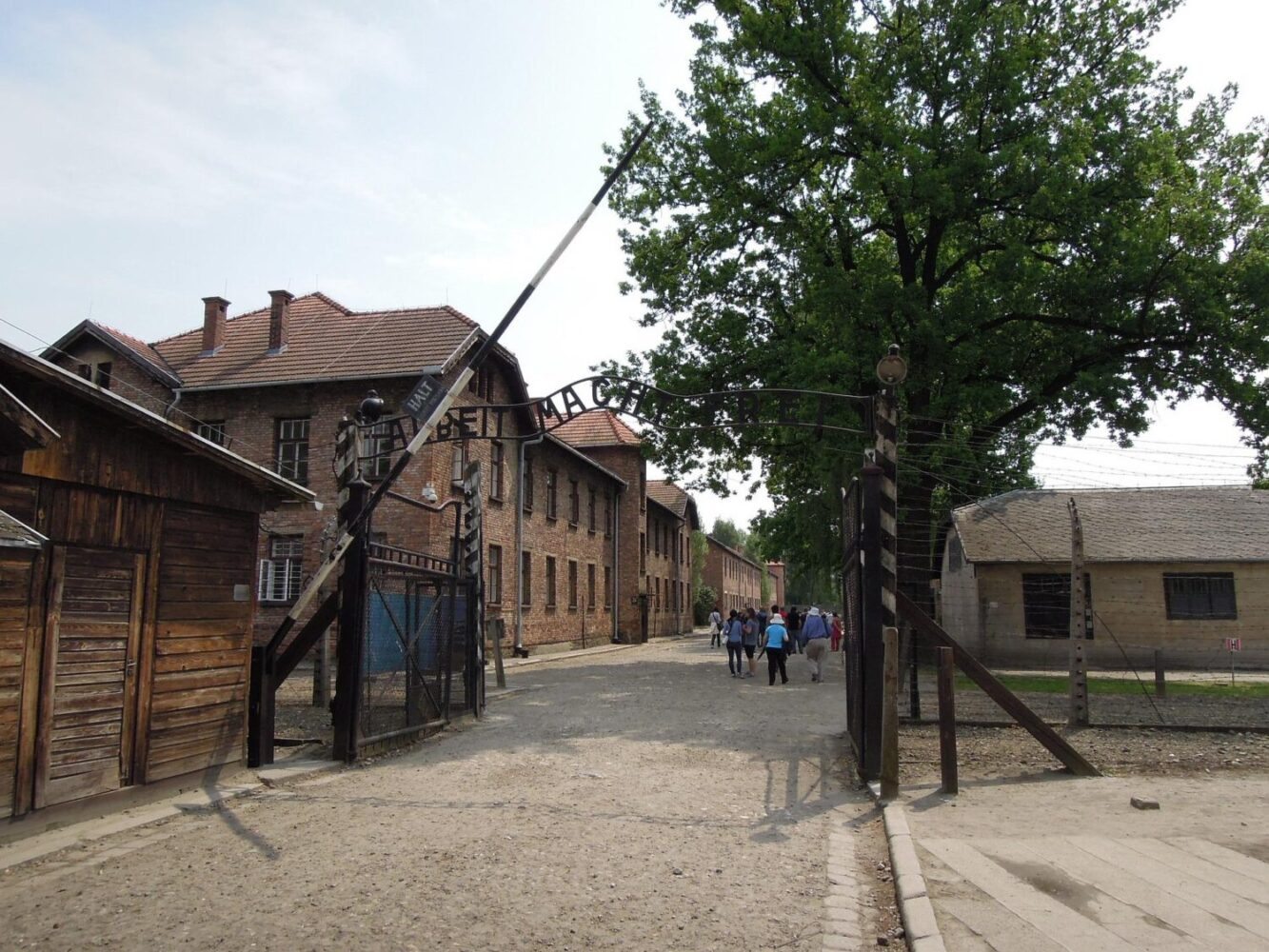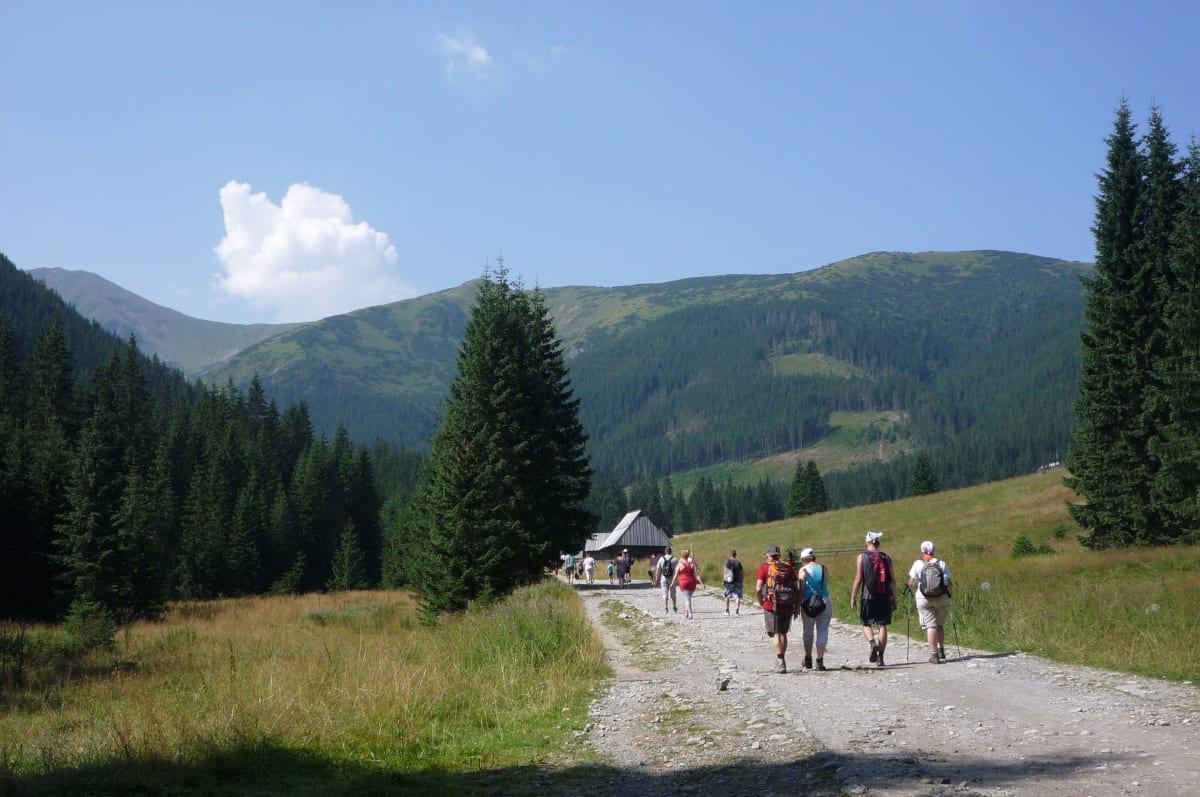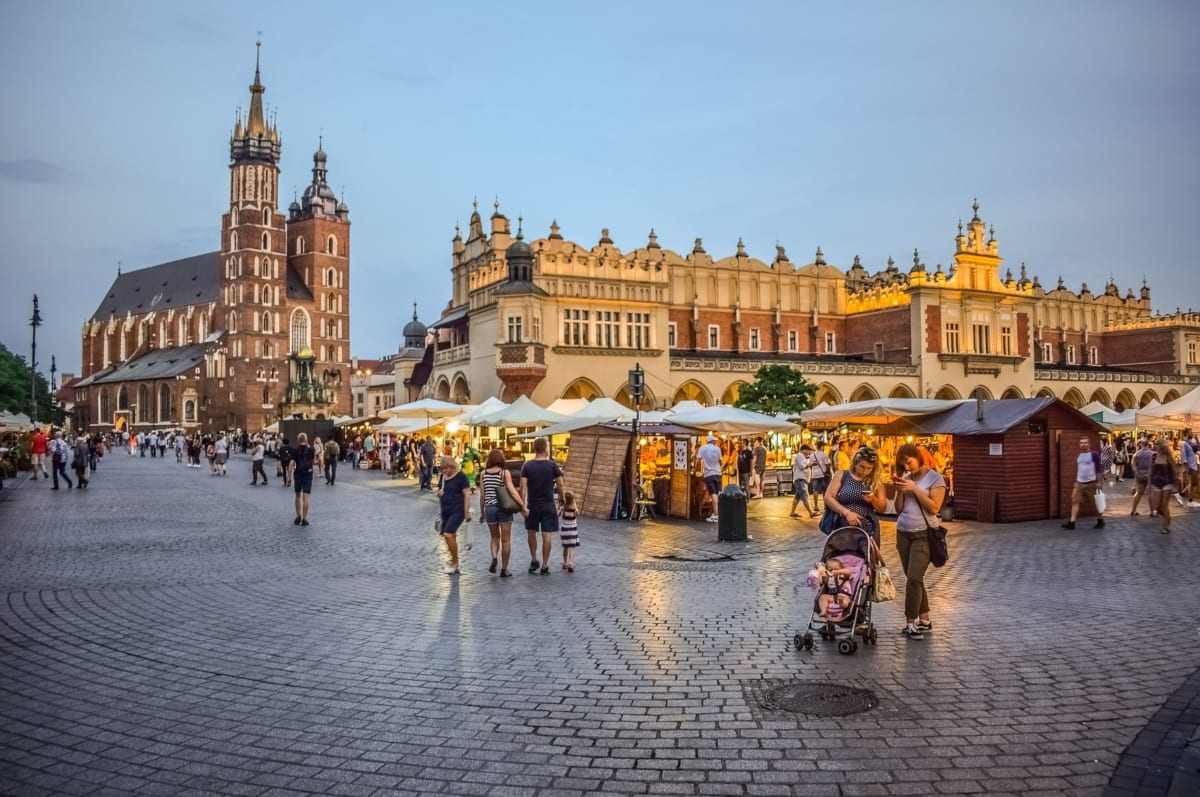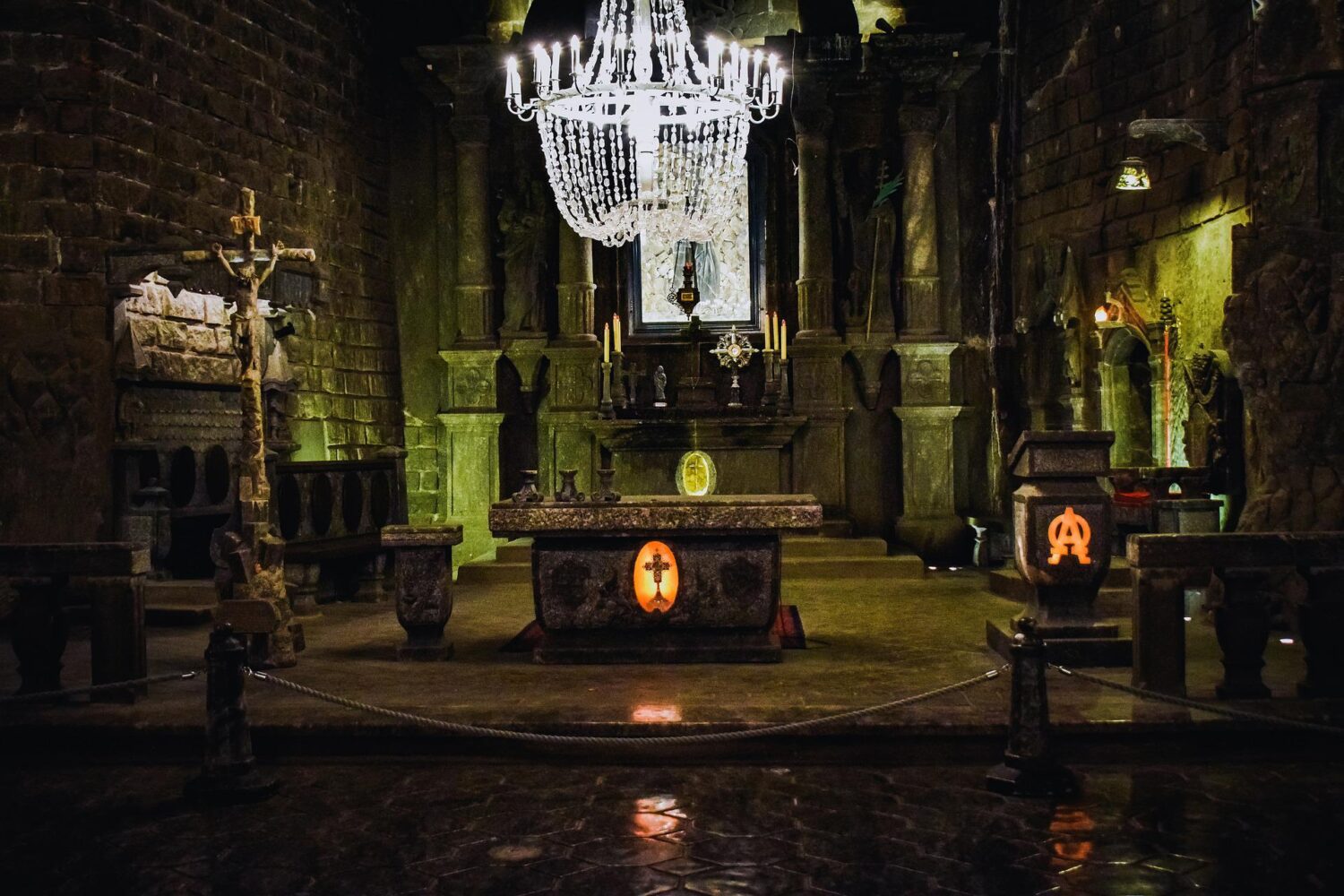Chapter 3 – Auschwitz, Krakow & a few beers
This post is part of a series of posts following the adventures of a man on a mission to explore 20 countries around Europe on a motorcycle – go to One for the road.
Chapter 3
High clouds are clearing a late afternoon sun as supper, meatballs, with chips and salad and a Zywiec beer, is taken alone at a long table in a refectory full of many long tables, all adorned with Easter bunnies and other oddments of Christianity. I’ve noticed today the daffodils and yellow tulips and the cemeteries all inundated by new, fresh, brightly coloured flowers.
Across the hall, a family of indeterminate nationality eat their supper, and when they’ve finished they get up and every one of them turns to mouth ‘bye’ to me. It is the youngest girl who pauses to push in the last chair beneath the table before scampering after the others. I can safely presume which nationality they are not.
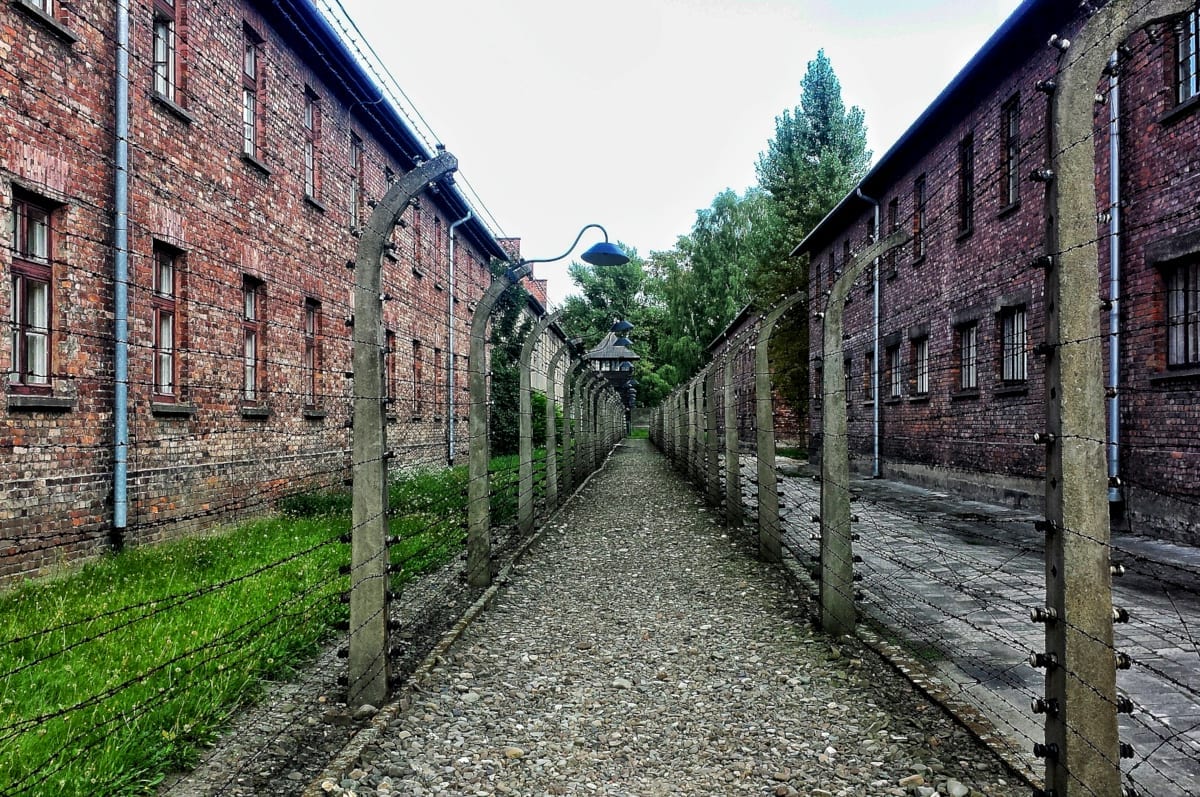
Auschwitz
Up in my room, I look out of the window. In the dusk, beyond the garden, the road, the land around the SS building, are the headlights of cars driving along the road by the railway line that transported so much immeasurable and unimaginable suffering to many hundreds of thousands of people, and the disbelief is . . . total. Incomprehension, that that is the very same road as can be seen in all the wartime photographs, and the railway which I have been following. This building is sponsored by the Catholic Church, but I can’t help but feel that salvation for the inmates of KL Auschwitz didn’t come via the Almighty, who had ignored it for the previous four years, but via the men of the Red Army.
Krakow
When I reach Krakow, I go straight to the Saski, an elegant old place near the centre with a uniformed doorman and an iron and brass lift and many carpeted corridors along to my room on the top floor. Here, my tiny balcony overlooks a mosaic of lawns and yards, lifeless except for a weeping willow which trails threads of bright new green life down to the sodden ground.
There is no towel, and afterwards, as I stand on the balcony with the chill April air raising bumps on my still-damp skin, there comes a heavy sprinkle of cold water. I look up to see a pigeon preening herself on a trembling branch just above me.
Medieval market square
Every country has its own ‘must-see’ landmarks, and few people walking into Krakow’s medieval market square, the largest such square in Europe, can resist a “Wow!” when they first see the dreamlike setting for the many historic styles of architecture bordering the square.
As I reach the end of the road the market square opens out before me and I mouth a silent, “Wow” – wow because it’s a stunning picture, but silent because I’ve seen it before and I don’t want to do what I did last time, which was to walk into a lamp post as I gazed around.
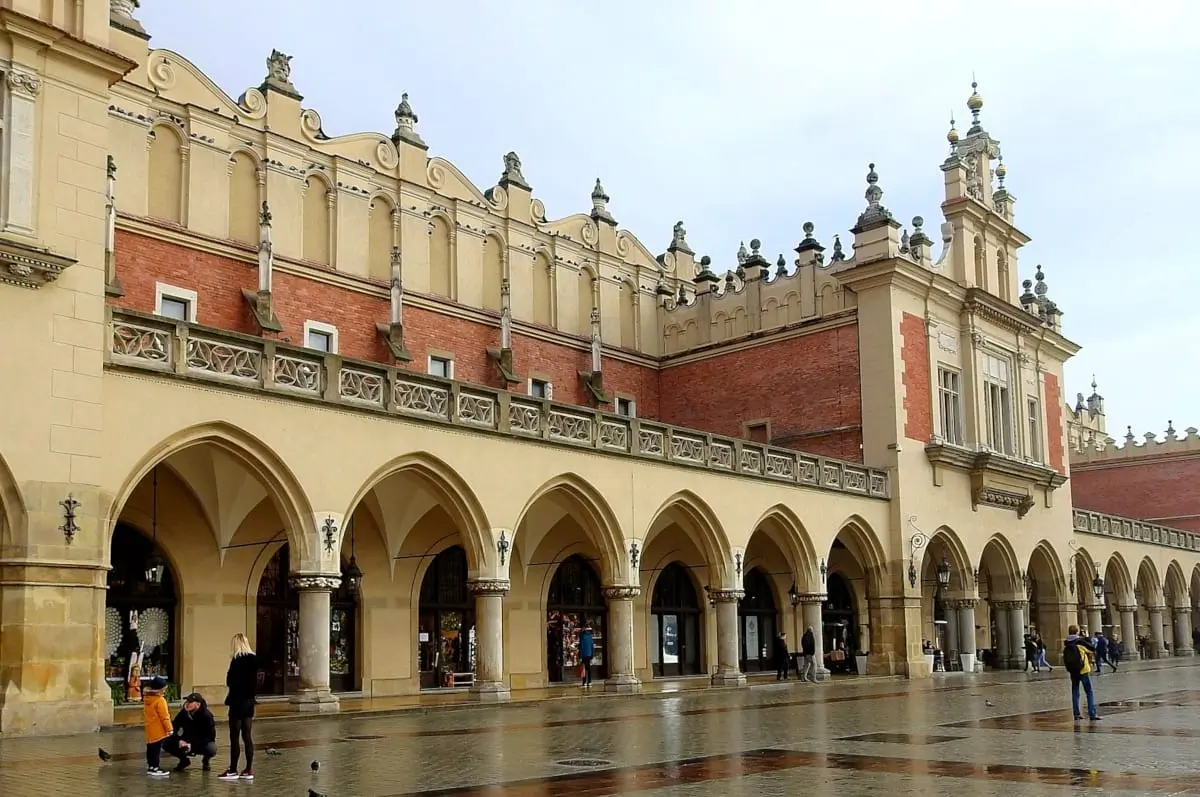
Cloth Hall
In the middle is the old Cloth Hall, with the two towering spires of St Mary’s church to the left. Straight ahead is the Town Hall tower, while over there is the Church of St. Adalbert, whose foundations are a thousand years old. I stroll a full circuit of the trafficless square, rustling with the murmur of hundreds of tourists going about their lattes and beers.
Tourism
Tourism is Krakow’s main industry, as seven million local and international visitors come here annually, the Poles (the great majority) to admire with pride, the Germans, Scandinavians and Japanese to say, “Wow” at the Gothic, Renaissance and Baroque buildings, the Americans to head straight for the Jewish Quarter, and the Brits to make it their Stag Party Destination of Choice, so that they can hold drinking competitions in which the winner is the first to throw up, and athletic competitions in which the stark naked winner runs a complete circuit of the square the fastest, in front of hundreds of international tourists having their supper and admiring the tranquillity of an evening in what was the European Capital of Culture in 2000.
I make my way to my old café, the ancient Camelot, with its rickety pine furniture and floor and flyblown wartime posters advertising beer and theatres. Keneally in his Schindler’s Ark describes how Schindler’s secretary found a basement bar north of the square where he could hold private parties; ‘an excellent jazz cellar in the narrow streets north of the rynek, the city square . . . popular with the students and younger staff at the university’, and I reckon this it.
It’s down a side street, with the 800-year old Baroque Church of St. John the Baptist and John the Evangelist across the road, its related buildings all around from the Eighteenth Century. I find a seat at a small corner table, and settle in to watch the world go by.
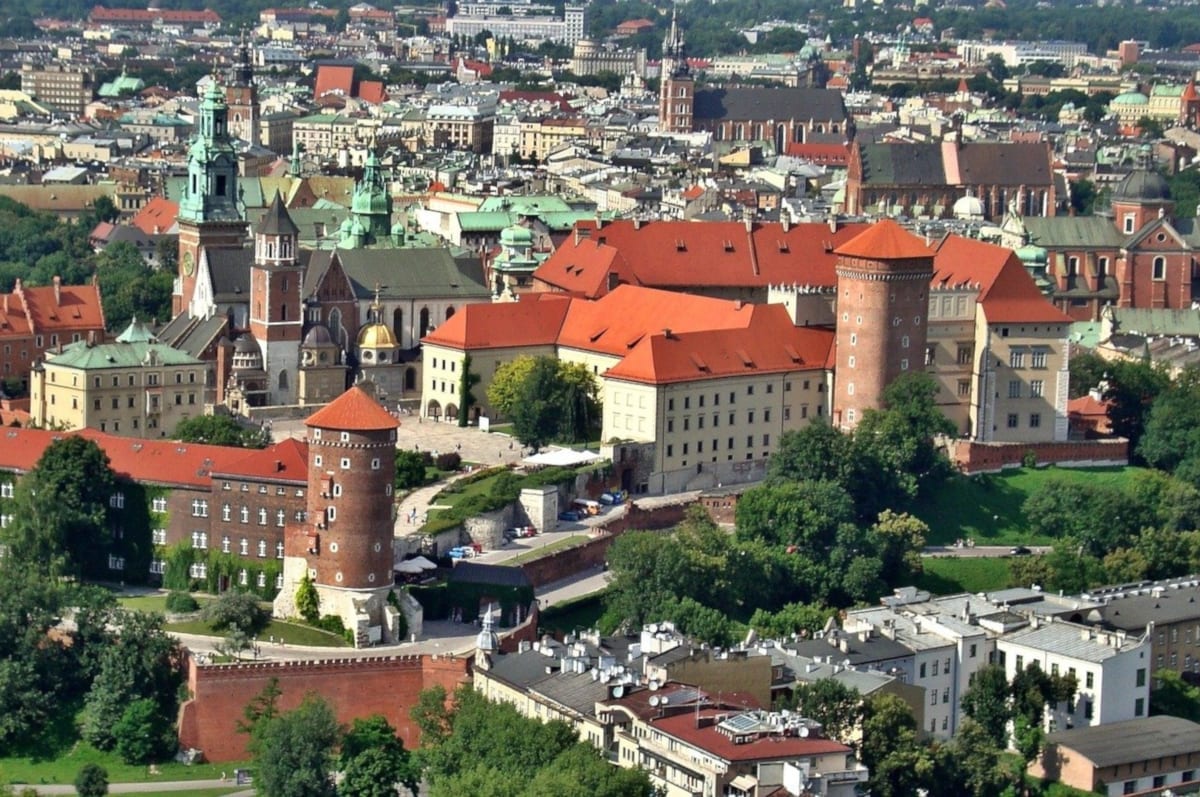
Matchlessly beautiful
You’d think that ‘matchlessly beautiful’ is a sweeping statement to make about a city which is bigger than Glasgow, boasts a vast, scratch-built socialist realist district, a steelworks which when it employed 40,000 people was the largest blast furnace in Europe and whose pollution forty years later is still adversely affecting old Krakow’s buildings and people; and is now Poland’s most important economic centre after the capital.
But you don’t get to be cited as one of Europe’s most beautiful cities for nothing, and while Gdansk, Warsaw, Poznan and Wroclaw all had their ‘old town centres’ rebuilt after the war, in Krakow you get the unmistakably real thing. There seems to be some mystery surrounding exactly how it escaped the same fate as Warsaw, which as everyone knows was flattened in 1945.
Apparently, demolition charges had been laid everywhere but the local Wehrmacht commander simply ignored his orders and went home to his wife, a decision of unimaginable consequence, since the architectural design of the Old Town has survived every upheaval since medieval times, and its almost unparalleled heritage of Gothic, Renaissance and Baroque buildings – Krakow, for centuries Poland’s royal capital, boasts six thousand historic sites – is home to more than two million works of art.
Jagiellonian University
I am sitting within metres of a dozen stunning twenty-something girls, which shouldn’t come as any surprise, since more than 200,000 students are studying here in Krakow’s twenty-four colleges, and at the Jagiellonian University (founded in 1364), with its library of more than 4 million books, and Poland is as famous for its young ladies as it is for its, er, libraries.
I tell the waiter that I’ll have three beers while I study the menu; he misunderstands the situation and brings three sets of cutlery with the beers, while I listen to a conversation going on at the table to my left. A young British man has just started work here as an English teacher, which is a coincidence because I have an interview tomorrow morning not just for the same qualification but at the same school, and his parents have come all the way from Watford to congratulate him on his achieving his Cambridge Certificate of English Teaching. Mark is a football fanatic, and worries them with talk of knives, gangs, the eight deaths (eight?) after a recent game, but that “everyone came together at the Pope’s anniversary, so don’t worry.”
Kasia
“Kasia’s name has eight different endings, depending on the context,” he tells his parents, Kasia being the anorexic teenager sitting beside him, with her huge eyes and pasted makeup, miniscule bra-less breasts, and jeans that are slung so low that occasionally they show her topmost pubes.
Breakfast the next morning is in a McDonald’s. There are fourteen others here, three of whom are in animated argument over a newspaper article, five individuals are studying, and one is reading a novel. None is as old as 30, and this is eight o’clock on a Saturday morning. None of my British friends – the youngest of whom is 28, with most in their 40s – will be up for another three hours. The restaurant itself is immaculate, and every single person clears their table when they leave.
The buds are growing visibly every day. The trees which were black four days ago are now sprinkled with emerald.
I go to a pub recommended by the school. The Stary Port is a basement bar just round the corner, a labyrinth of connected smokey dark rooms. At the table opposite me is a young couple. The boy’s face has deep parenthesises drawn down around his mouth, his skin has suffered bad acne, and a scrubby blond beard doesn’t quite cover it. His eyes, deep set and brilliant blue, are the only kind of eyes that could be set in such a serious and cadaverous face. His greasy blond hair is long, and he draws strongly on his cigarette.
Whatever is troubling him has his girlfriend’s sympathy, and they both sit, watching the candles and the darkness. He could have stepped straight into the uniform of a U-boat captain after a long and hazardous mission. However how important his problems were or were not, he wasn’t putting anything on. He is about 25 years old. His girlfriend brings two beers and a plate of chips. He stares and sucks on his cigarette and says nothing.
I conclude that he too has just been accepted at the language school.
A podgy young man returns from the loo, slides forward, his face on his forearms and his long hair falls across the table. I have already read the slogan on his T-shirt: FAILURE IS NOT AN OPTION.

The next morning, I wake to an ash-blue sky, with the bells of sweet, ancient Krakow tolling the first Mass, and begin to pack the panniers.

